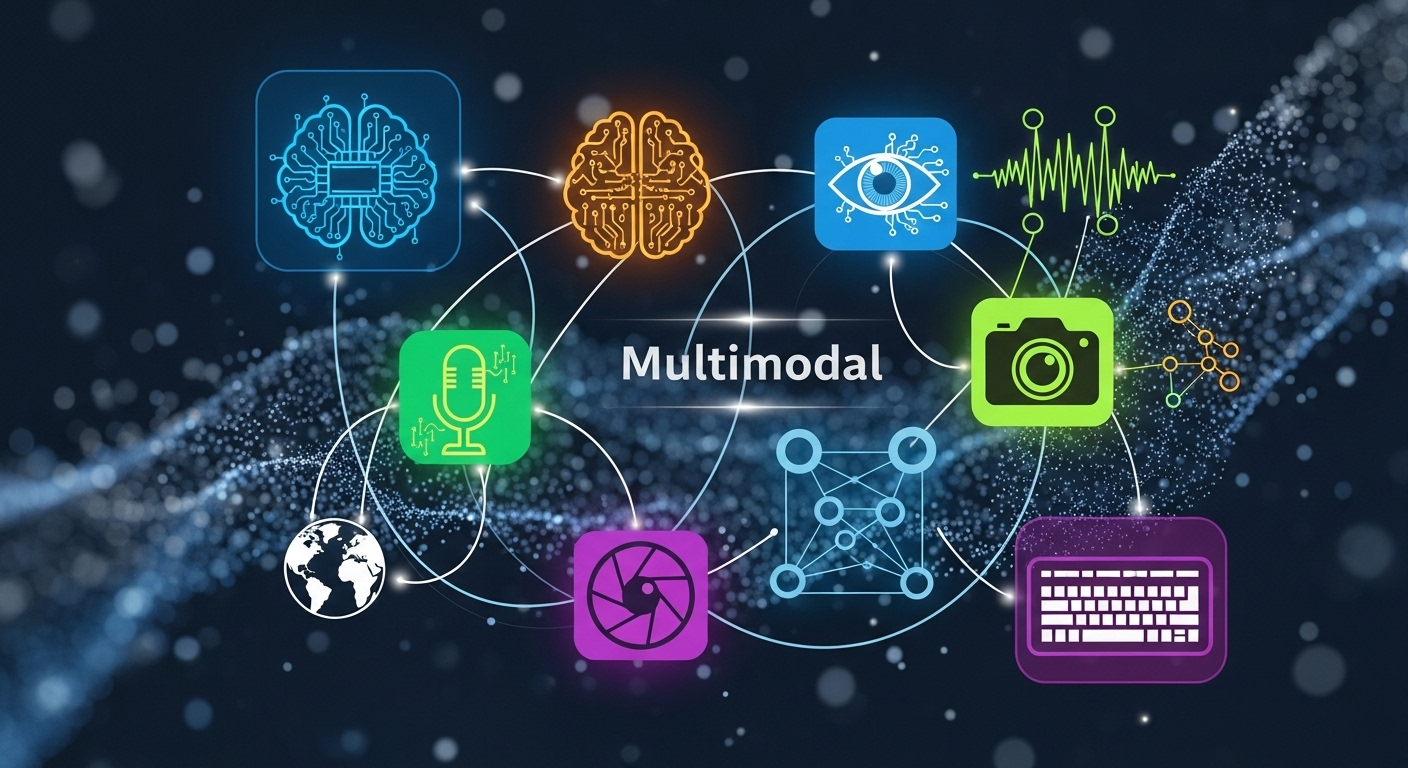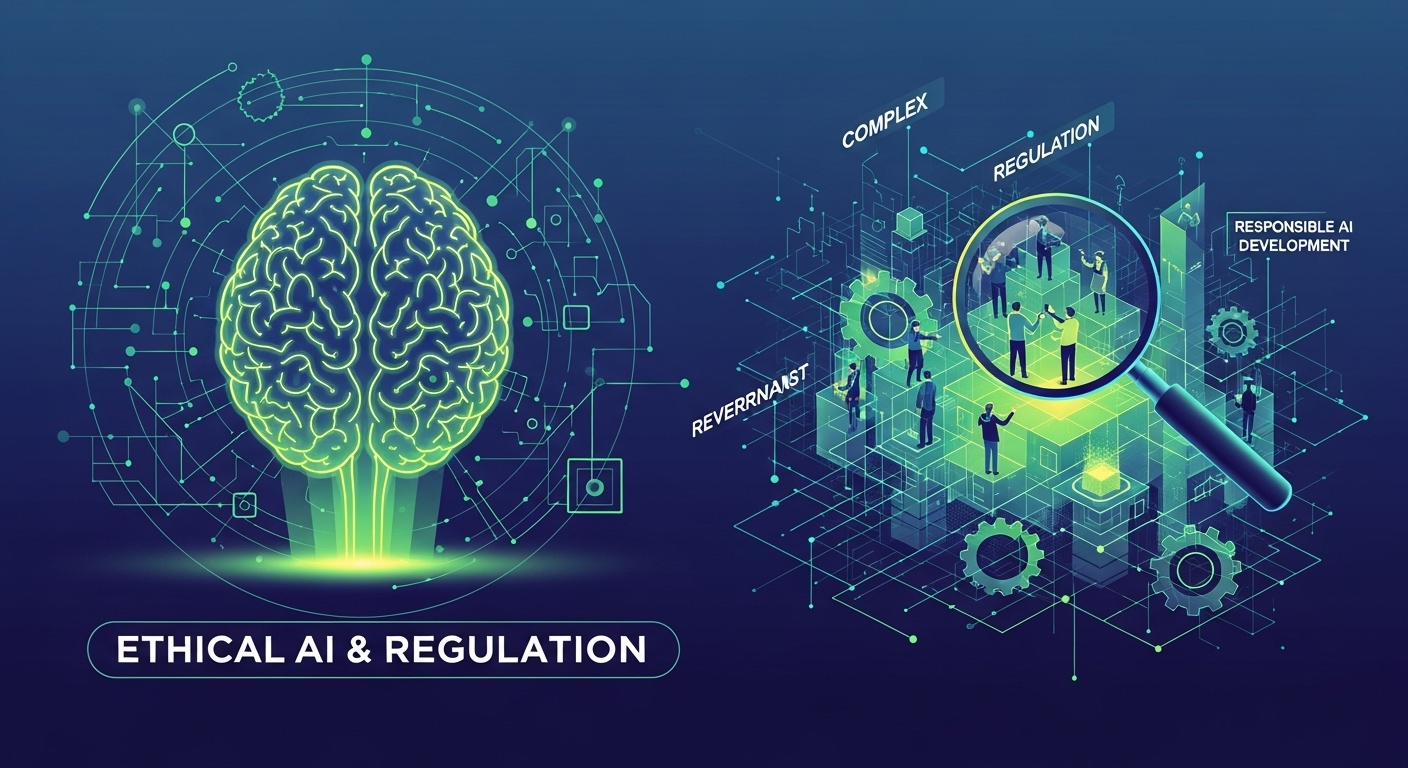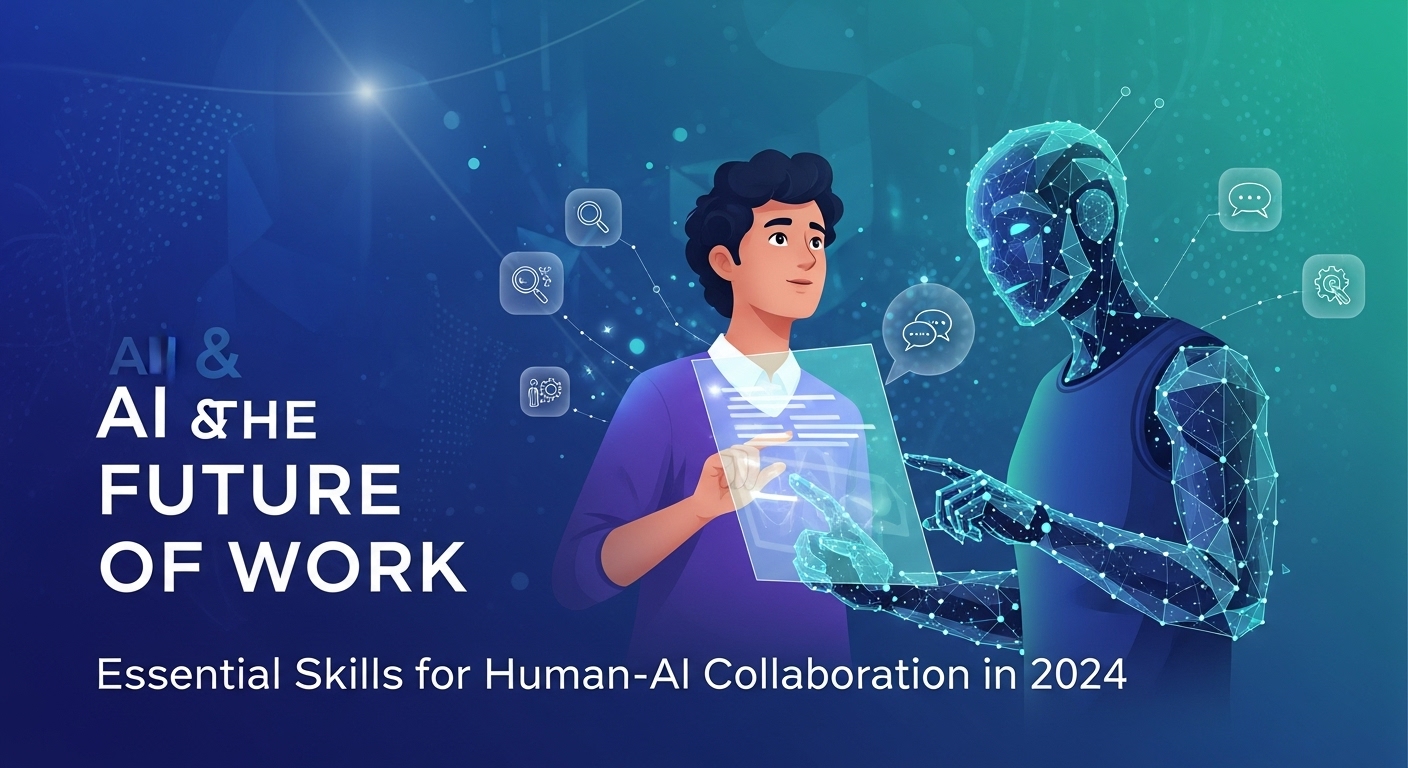The Dawn of a New AI Era: Beyond Text
For years, our interactions with artificial intelligence have been largely confined to text boxes. We typed questions, and AI typed back answers. While impressive, this was like communicating with the world through a keyhole—we only got a tiny slice of the full picture. But that’s all changing. We are now standing at the precipice of a monumental shift, a core part of the latest ai & tech trends: the rise of multimodal AI. This isn’t just an incremental update; it’s a fundamental leap in how machines perceive, understand, and interact with the world, mirroring human senses in ways we once only dreamed of.
Multimodal AI is the ability for an artificial intelligence system to process and understand information from multiple data types—or ‘modalities’—simultaneously. Think text, images, audio, video, and even sensor data. Instead of just reading words, AI can now see a picture, hear a voice, and understand the context that connects them all. This fusion of senses is what makes human intelligence so powerful, and AI is finally catching up. In this article, we’ll explore what multimodal AI is, why it’s a game-changing trend, and how it’s already beginning to reshape our daily lives and industries.
What Exactly is Multimodal AI?
To truly grasp the significance of this trend, we need to break down the concept. At its heart, multimodality is about moving from a one-dimensional understanding to a rich, multi-layered comprehension of information. It’s the difference between reading a recipe and watching a cooking show where you see the techniques, hear the sizzle, and read the on-screen instructions.
From Single-Track Minds to Integrated Intelligence
Traditional AI models were specialists. A language model like an early version of GPT was a master of text. A computer vision model like ResNet was an expert at identifying objects in images. Each operated in its own silo. If you wanted to analyze a video, you’d need one model to process the visuals and another to transcribe the audio, with a human or complex code needed to stitch the insights together.
Multimodal AI breaks down these silos. It uses a single, integrated neural network architecture to process different data types in a unified way. The model learns the intricate relationships between words, sounds, and visuals. For example, it doesn’t just see a picture of a dog and read the word ‘bark’; it understands that the image of the dog is conceptually linked to the sound of a bark and the text describing it. This allows for a deeper, more contextual understanding that is far more powerful than the sum of its parts.
The Magic Behind the Fusion
How does it work? The process involves sophisticated techniques like ’embedding’ and ‘attention mechanisms’. Essentially, the AI converts all incoming data—whether it’s pixels from an image, soundwaves from an audio clip, or words from a sentence—into a common mathematical representation, or ’embedding space’. In this shared space, the concept of a ‘cat’ from a photo can be located right next to the concept of a ‘cat’ from a text description. The model can then use attention mechanisms to weigh the importance of different pieces of information, whether visual or textual, to make a prediction or generate a response. This fusion is the technical bedrock of the multimodal revolution.
Why Multimodal AI is a Game-Changer in Tech Trends
The shift to multimodal systems is not just an academic exercise; it has profound, real-world implications. It’s a cornerstone of current ai & tech trends because it unlocks capabilities that were previously impossible, making AI more useful, intuitive, and powerful.
Creating More Human-Like and Intuitive Interactions
Humans are naturally multimodal. We communicate using words, tone of voice, facial expressions, and gestures. Multimodal AI allows our technology to do the same. Imagine a customer service AI that can understand the frustration in a customer’s voice while simultaneously analyzing a photo of a broken product they sent. Or consider an AI assistant like GPT-4o that you can show a live video of a flat tire, and it can verbally walk you through the steps to change it. This creates a seamless, natural, and far more effective user experience that feels less like talking to a machine and more like collaborating with a helpful expert.
Unlocking Deeper Insights from Complex Data
In many fields, critical information is spread across different formats. In medicine, a doctor’s diagnosis relies on analyzing X-ray images, reading patient history notes, and listening to their description of symptoms. A multimodal AI can process all of this data together, potentially spotting patterns and correlations that a human might miss. Similarly, an autonomous vehicle needs to fuse data from cameras (visuals), LiDAR (depth), and microphones (sirens) to navigate the world safely. By understanding the world through multiple senses, AI can make more informed and accurate decisions.
Powering the Next Wave of Creativity and Content
The creative industry is being transformed by multimodal generative AI. Text-to-image models like Midjourney and DALL-E were just the beginning. Now, we’re seeing the emergence of text-to-video (Sora), text-to-music, and models that can take an image and an audio clip to generate a talking avatar. This empowers creators with incredible new tools, allowing them to bring their visions to life with unprecedented ease and speed. It’s also changing how we consume media, with personalized, AI-generated content becoming a tangible reality.
Real-World Examples of the Multimodal Revolution
This isn’t science fiction. Multimodal AI is already being deployed in a variety of applications, and its footprint is growing every day.
The New Generation of AI Assistants
The most visible examples are the latest AI assistants from major tech companies. Google’s Gemini and OpenAI’s GPT-4o are designed from the ground up to be multimodal. Users can have a spoken conversation with them, show them things through their phone’s camera, and get real-time analysis and feedback. You can point your camera at a menu in a foreign language and have the AI translate it and describe the dishes to you in real-time. This is a quantum leap from the text-based chatbots of just a year ago.
A Leap Forward for Accessibility
Multimodal AI holds immense promise for improving accessibility for people with disabilities. Apps like ‘Be My Eyes’ use this technology to connect visually impaired users with AI that can describe their surroundings, read labels, or identify objects through their phone’s camera. Other applications can provide real-time sign language interpretation or generate audio descriptions for videos on the fly, making the digital and physical worlds more accessible to everyone.
Transforming E-commerce and Retail
The retail industry is leveraging multimodal AI to enhance the shopping experience. Visual search is a prime example. Instead of trying to describe an item you saw, you can simply take a picture of it, and an AI will find that exact product or similar ones online. Recommendation engines are also becoming more sophisticated, analyzing not just your purchase history but also the styles in images you’ve saved or liked to provide far more accurate and personalized suggestions.
Conclusion: Navigating the Multimodal Future
The transition to multimodal systems is undeniably one of the most exciting and impactful ai & tech trends of our time. By giving AI the ability to see, hear, and understand our world in a more holistic way, we are unlocking a new frontier of possibilities. From more natural human-computer interaction and deeper data insights to revolutionary creative tools and life-changing accessibility features, the impact will be felt across every industry.
Of course, this rapid progress also brings challenges, including ethical considerations around data privacy, potential biases, and the sheer complexity of building these systems responsibly. As we move forward, it is crucial for developers, businesses, and users alike to stay informed and engaged. The multimodal revolution is here. The key is not just to watch it happen, but to actively participate in shaping a future where this powerful technology is used to create a more intelligent, connected, and equitable world. What are your thoughts on how multimodal AI will change your industry? The conversation is just beginning.


